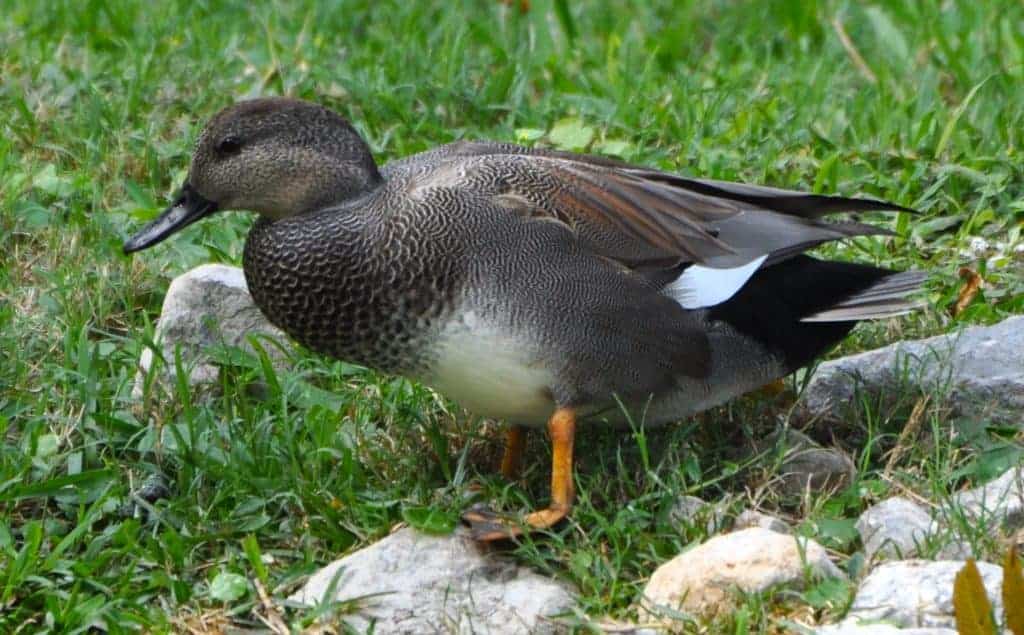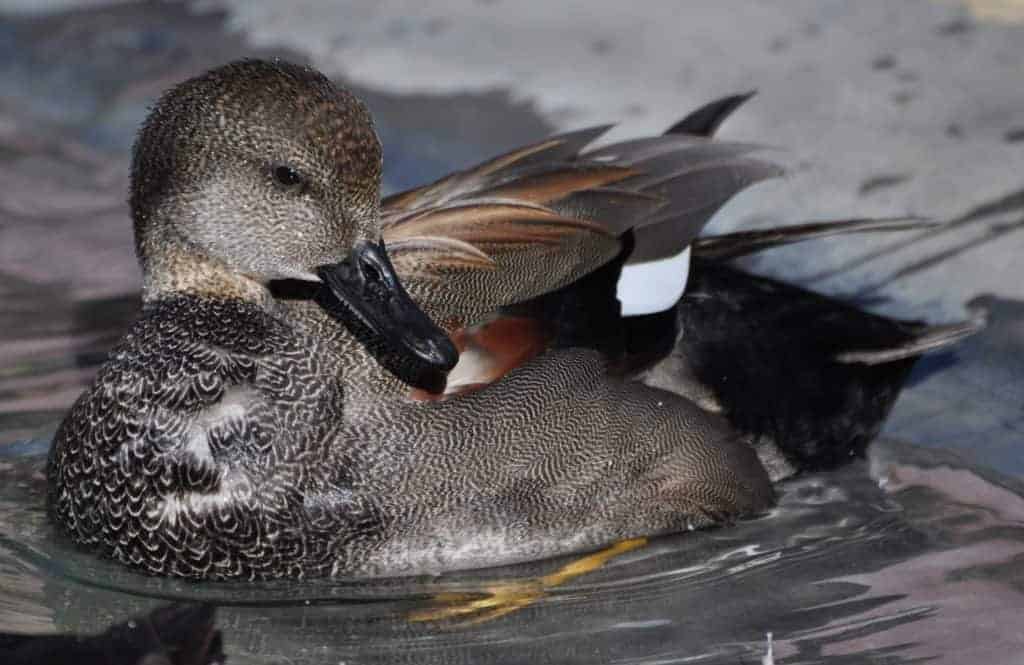Gadwall

Gadwall are a little smaller than the Mallard Anas platyrhynchos, breeding in northern areas of Europe and Asia, and central North America. They nest in low numbers in the UK. Over winter, about 25,000 Gadwall (20–30% of the European population) arrive to use British gravel pits, lakes, reservoirs and coastal wetlands and estuaries. For this reason they are an Amber-listed species in Britain, yet are of Least Concern globally.
Mareca strepera
The Gadwall is a modestly-coloured dabbling duck, but seen close up the drake’s overall grey is made up of exquisitely fine barring and speckling. In the field, his key identification feature is the black rear end. In flight, the white wing-patches are very obvious in both sexes.

Gadwall are mostly vegetarian, feeding by dabbling and grazing. Aquatic plants (seeds, leaves, stems, roots), and grasses are all enjoyed. They will do well on grains and pellets, with additional greens if grazing is limited.
Quiet and unassuming, Gadwall are usually no trouble in a mixed collection.
Gadwall breed readily, usually laying April to June. They like close ground cover or a ground-level nest box, usually close to water. 8–12 creamy white to pale pinkish eggs are incubated by the duck alone for 24–26 days. If the clutch fails, the duck may choose a different mate and lay again.
Ducklings are not difficult to rear and do well on starter crumbs and chopped grass. Wild ducklings take some invertebrates for the first two or three weeks.
Share this page